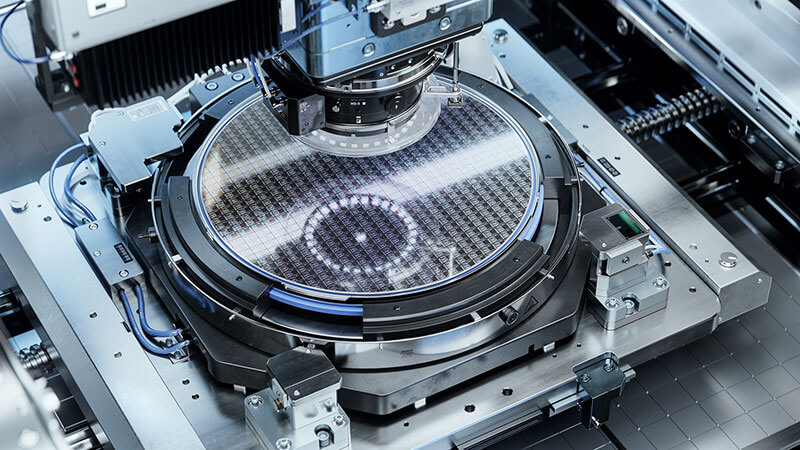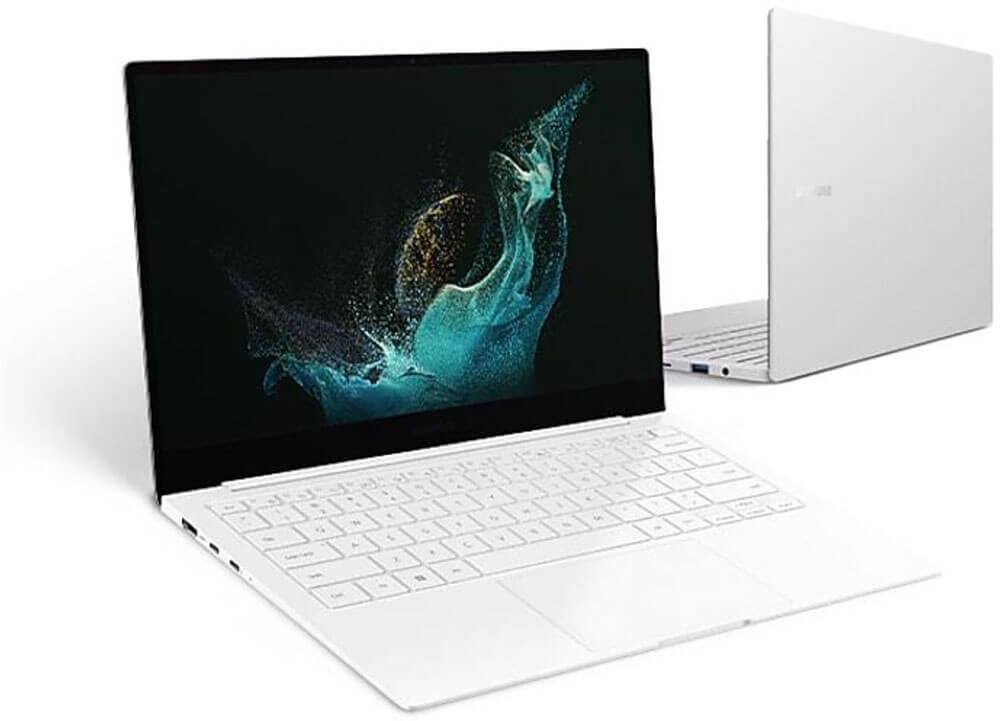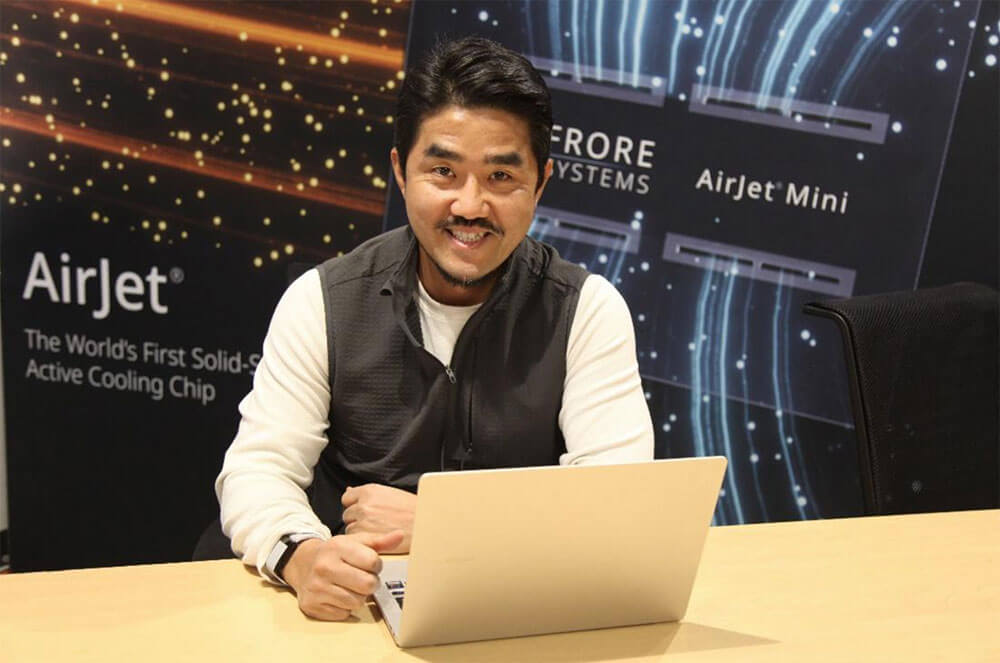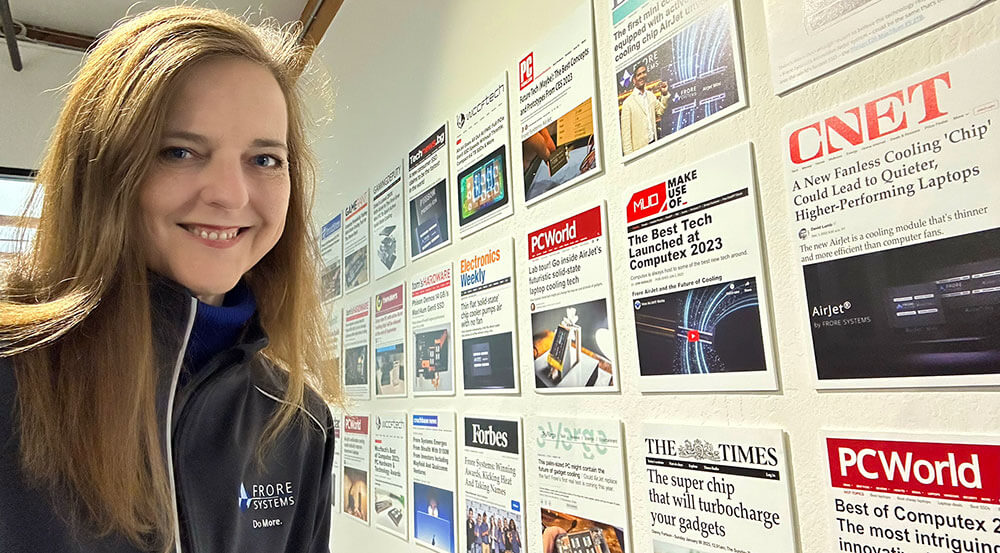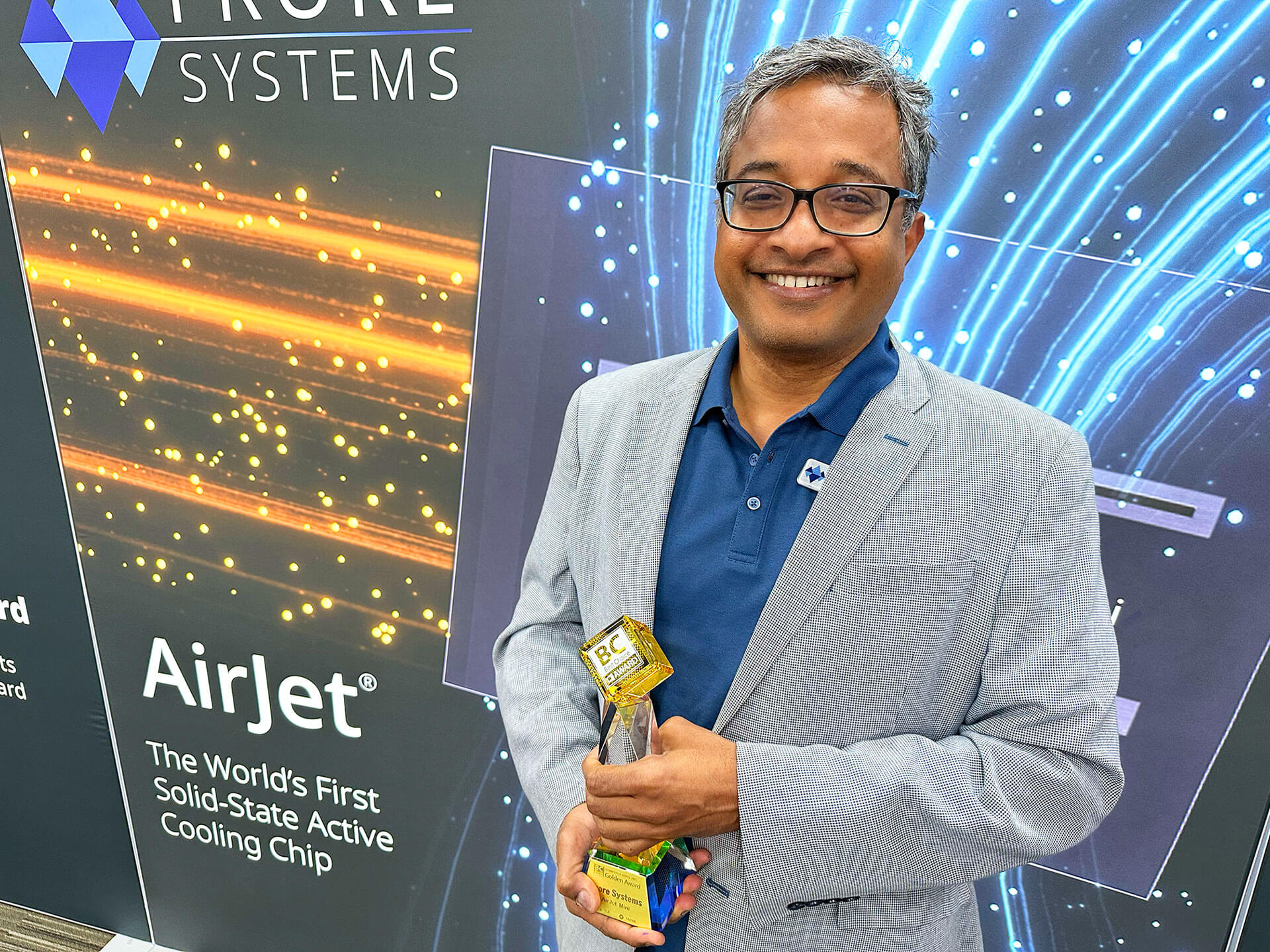
This week the Frore Systems Blog caught up with Surya Ganti, Founder and CTO, to chat about the progress of AirJet, it’s groundbreaking technology, and how far the company has come.
Frore: It’s been 12 months since you announced Airjet Mini at CES2023. We’ve just finished CES2024. How are things going?
Ganti: 2023 was an incredible year for our team. When we launched AirJet at CES2023, we had working AirJet Mini samples and had integrated it into a couple of notebooks and compact camera devices as proof-of-concept. The response was incredibly positive - both from potential customers and the media, everyone was excited that someone had picked up the challenge of heat removal and delivered an incredibly disruptive new solution. Heat is a problem everyone has always known as a major issue, but industry has never discussed it as no one had an innovative new solution. Industry now sees AirJet as that solution and everyone has been enthusiastically leaning into the technology. The unprecedented level of interest has proven that we are on the right track.
With our core value proposition proven, and a huge sales pipeline for AirJet, 2023 was really our year for commercializing AirJet and scaling our manufacturing capabilities to satisfy the growing demand.
Frore: How do you commercialize and scale a product like AirJet?
Ganti: Imagining, designing and building breakthrough technology is always inspiring, but the hard work certainly doesn’t end there. The team was incredibly busy last year getting AirJet ready for mass production to meet the demand in our pipeline.
Demonstrating the reliability of AirJet was an important goal for us in 2023. We invested significantly, undertaking our own internal testing to ensure AirJet passed rigorous reliability tests assuring 5-year life-time. This focus and determination to have an incredibly robust product has paid off. Our biggest customers, global manufacturers with deep expertise in electronics and engineering, completed their own rigorous performance and reliability testing and we passed with flying colors and won commercial product “design ins” in a number of different market segments. This is a huge step that will see AirJet integrated by OEM’s into major brands in the coming 12 months.
We also took customer feedback and added new features to AirJet. While we have been focused on heat as the major challenge facing the industry, we saw the opportunity to simultaneously solve the other major challenge – dust. Anyone who has seen the inside of a laptop, will have seen the way dust collects inside the computer. Dust causes serious issues for electronic devices, from impeding airflow, causing overheating, creating electrical hazards, promoting corrosion, to degrading optical components, all of which can lead to reduced performance, malfunctions, or premature failure of the device.
So we added an intelligent self-cleaning feature and dust filters to the AirJet to ensure dust is not an issue. Even more impressively, AirJet’s massive 1750 pascals of back pressure enables dust filters to be added not only on the AirJet, but also on the air inlets of the host device. This protects the entire device and all its electronic components from the destructive impact of dust.
Ironically, fans need ever increasing airflow to battle heat, but lacking the back pressure to enable the use of dust filters, this draws more and more dust into the device, exacerbating dust related issues for the entire system. While you can hear the impact of dust on cooling fans, making more and more noise before breaking down, the damage to electrical componentry is more difficult to see until the device completely fails.
AirJet has no mechanical moving parts, and with intelligent self-cleaning and dustproof filters protecting the entire device, AirJet blows the concerns of dust into the past.
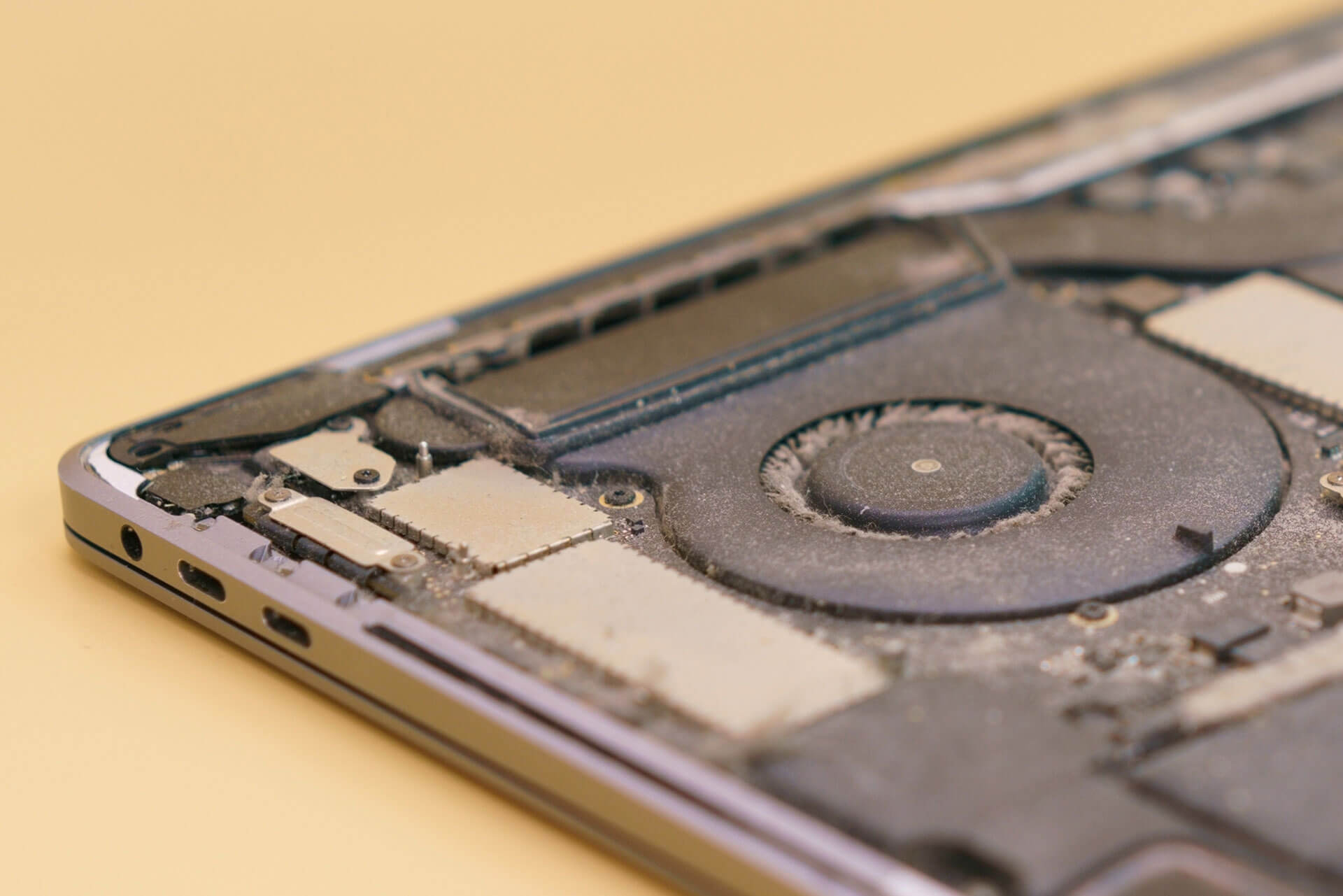
Scaling of course is critical for our growth plans. With our value proposition validated and product reliability established, we spent 2023 investing in setting up the Frore Systems Fab for high volume production of AirJet, ensuring the Fab meets our high product quality and yield requirements.
The demand for AirJet is growing. Consumers are demanding higher and higher performance in ever smaller, silent, form factors. All electronic devices are constrained by heat and the smaller and thinner the product the bigger that challenge becomes.
All device manufacturers are looking for ways to differentiate their product and grow their market share. Looking at just a couple of the market forecasts for 2024, the potential is staggering…Smartphones market size US$500B1, Notebook market US$70B2, Tablets market US$99B3. That is a lot of consumer product, a lot of heat, and potentially a lot of AirJet chips. When we can solve the biggest problem facing these and many more markets, you can see why we are excited about our growth.
Frore: You say you’ve had a lot of customer interest? What can we expect in 2024 in terms of products in market upgraded with Airjet?
Ganti: Our Business Development team has been very strategic in how they engage the market. We need to find the right customers who align with our growth timeline and scale. Fortunately, we have not been short of companies wanting to work with us.
We’ve been actively working with customers in the Notebook, Tablet, Mini-PC, SSD, Smartphone, LED Lighting and WiFi markets. Some of these, like Mini PCs and SSD, are less complex to integrate and are coming to market faster. Some other products have a longer design cycle and will start appearing later this year and into 2025.
In 2023, we worked with our most forward leaning customer, ZOTAC to bring the first Mini PC with AirJet to market. ZOTAC was a great partner in this collaboration which enabled us to develop, install and operationalize the processes and tools necessary to integrate and qualify AirJet thermal solution in the customer’s high volume production line. The experience really accelerated our path to market growth. The ZOTAC ZBOX PICO 430AJ with AirJet, predominantly a B2B product, is now in mass production and available for purchase. Several more customers are expected to announce in 2024 and start selling their AirJet based devices in 2024 and beyond…
Frore: How is AirJet different from a fan-based cooling system? Is it simply a case of out with the old and in with the new?
Ganti: Actually, it isn’t quite that easy. Fan-based systems haven’t really changed significantly in decades, so swapping fans, heat sinks and fin stacks in and out has become second nature to a lot of engineers in the industry.
Airjet is a completely new approach. The thinness, scalability and high back pressure of AirJet allow for radically new thermal designs.
Our Engineers have quickly become full thermal solution providers to our customers. Working closely with our customers’ engineering teams, we are delivering a turnkey system thermal solution blueprint. We are able to assist our customers in realizing the full potential of AirJet and build faster, quieter, thinner, lighter, dust-proof and vibration free devices in the shortest amount of time.
Frore: What about the competition? It seems like Airjet is in a market space all of its own right now, do you expect that to continue?
Ganti: As everyone knows AirJet is the world’s first solid-state active cooling chip. While the AirJet chip looks deceptively simple, the engineering required to achieve the multi physics design that converges structural, fluidic, acoustic & electrical resonance is extensive. The development of AirJet required a multidisciplinary team of experts crossing mechanical, electrical, and material engineering, acoustics, polymers chemistry and thermal design, simulation and design and many more.
AirJet’s manufacturing is also innovative in its own right: new materials, applied in completely new ways, new manufacturing approaches and new testing protocols, we developed it all from the ground up.
Of course, there are other ways to cool electronic devices that have been in use for decades, but they have limitations. It’s time for innovation that enables device manufactures can unleash the full performance of their devices. We are leading the way, disrupting thermal management with a game changing technology and we intend to continue our rapid innovation to ensure we maintain our cutting-edge position.
We received a lot of Technology Awards throughout 2023. I believe the industry is inspired by AirJet, and the ripple effect it is having, spawning a whole new generation of innovation across multiple markets. In addition to all the innovation in the chip itself, AirJet is also unleashing generational innovation in the products adopting it. Our partner’s engineering teams are now asking themselves… “What can we do 2-3x the performance.” And the results will speak for themselves. They are taking the additional thermal envelope delivered by AirJet and are doing amazing things, designing a whole new generation of capabilities in their devices – AI PCs are a great example. It is exciting to be part of it all.

Frore: How do you keep innovating in a market where you competition is only the same old traditional solutions?
Ganti: We are constantly challenging ourselves. Our dedicated R&D Engineering Team is pretty much addicted to innovation – they love the thrill of doing something no one has ever accomplished before and are always leaning forward. We are light years ahead of any competitors in this space and we have every intention of staying there.
At CES2024 we announced AirJet Mini Slim, in addition to introducing intelligent self-cleaning and thermoception – the ability to independently sense temperature to enable autonomous optimization of heat removal – the AirJet Mini Slim is lighter and thinner. The chip’s heat removal performance in an even smaller form factor is the first manifestation of what we call Frore’s Law.
Frore: Everyone knows about Moores Law, so we have to ask what exactly is Frore’s Law?
Ganti: Frore’s Law started off as our internal team challenge but has now become very real. Everyone knows Moore’s Law is the principle that the speed and capability of computers can be expected to double every two years, as a result of increases in the number of transistors a microchip can contain. However, many believe Moore’s Law, established back in 1965, is starting to fail.
Superior thermal management also increases the speed and capability of computing and can pick up the challenge from Moore’s Law. In fact, at CES we showed multiple demonstrations where AirJet increased performance by 2-3x in multiple electronic devices.
Frore’s Law is our commitment to doubling the thermal performance of our products every two years - AirJet Mini Slim is the first proof point of our ability to deliver increased performance in a smaller chip, and we’ve only just begun.
Frore: So what does the future hold for Frore Systems and AirJet?
Ganti: We are excited for the coming year as many of the partners we have been working with over the last 12 months will start to announce their products with AirJet. As more AirJet enabled products enter the market, we are confident adoption of solid-state active cooling will continue to accelerate even faster. Afterall, who doesn’t want the fastest, quietest, thinnest, lightest, dustproof and vibration free products available.
As Frore’s Law continues to manifest, we will deliver ever more effective thermal solutions for our customers, helping them provide the best device performance possible to their customers.

About Surya Ganti – Co-Founder and CTO of Frore Systems.
Surya Ganti is the co-founder and CTO of Frore Systems. Early in his innovative engineering career, he worked across a wide variety of GE product technologies including Aircraft Engines, Power Generation, Healthcare, Consumer Appliances, and led efforts in Nanotechnology. Surya has held many leadership roles at Qualcomm. As VP and head of R&D for Qualcomm MEMS Technology, he led the development of three generations of MEMS displays. Most recently, he drove R&D, development & operations of Ultrasonic Fingerprint technology for Qualcomm from Inception to High Volume Production with several successful product launches. Surya has a bachelor's degree from Indian Institute of Technology Madras, and a Ph.D. in Mechanical Engineering from the Massachusetts Institute of Technology.
1 https://www.futuremarketinsights.com/reports/tablet-market
2 https://www.futuremarketinsights.com/reports/notebook-market
